Monthly Archives: March 2021
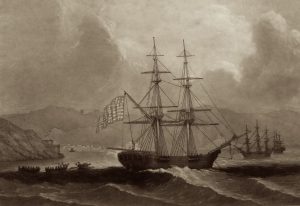 In 1799, in an area of the Caribbean Sea that had been listed as off limits for American ships, the English cutter, Sparrow intercepted the American brig, Nancy. The Nancy was in a place they should not have been, but the captain, Thomas Briggs produced papers claiming the ship was owned by a Dutchman. The captain of the Sparrow was skeptical, suspecting a smuggler. The problem was that he lacked evidence as to the true status of the Nancy, or the real reason for her trip. Due to his doubts about status and a lack of trust of the Nancy’s captain, the Sparrow’s captain sent Briggs to Jamaica to have his case heard by the vice-admiralty.
In 1799, in an area of the Caribbean Sea that had been listed as off limits for American ships, the English cutter, Sparrow intercepted the American brig, Nancy. The Nancy was in a place they should not have been, but the captain, Thomas Briggs produced papers claiming the ship was owned by a Dutchman. The captain of the Sparrow was skeptical, suspecting a smuggler. The problem was that he lacked evidence as to the true status of the Nancy, or the real reason for her trip. Due to his doubts about status and a lack of trust of the Nancy’s captain, the Sparrow’s captain sent Briggs to Jamaica to have his case heard by the vice-admiralty.
It turns out the captain of the Sparrow was not wrong in his doubts. Two days later, another English ship, the Ferret, caught a large shark near the coast of Haiti. When the cut the fish open, they found in its belly the papers of the American ship Nancy. Apparently, the Nancy’s captain, Thomas Briggs had thrown them overboard before getting false Dutch papers in Curacao. It was simply a fluke that the  Ferret somehow managed to catch the very shark that ate the real papers. I suppose that if the Nancy’s captain had used any common sense at all, he would have burned the papers, and then thrown the ashes overboard. The likelihood of having any useable paperwork after they were burned, would be extremely slim. The valid papers for the Nancy were dubbed the “shark papers.” They were produced in court, and the Nancy and her cargo were confiscated.
Ferret somehow managed to catch the very shark that ate the real papers. I suppose that if the Nancy’s captain had used any common sense at all, he would have burned the papers, and then thrown the ashes overboard. The likelihood of having any useable paperwork after they were burned, would be extremely slim. The valid papers for the Nancy were dubbed the “shark papers.” They were produced in court, and the Nancy and her cargo were confiscated.
The Nancy truly was an American sailing vessel, even though the captain tried to hide that fact. It was a type of ship noted in sources as either a brig or a brigantine, and it had been chartered to transport war supplies during the American Revolutionary War. When Michael Fitton, captain of the schooner Ferret, tender to HMS Abergavenny, cruised the Mona Passage in company with Sparrow, commanded by Mr Whylie, the two accidentally separated for a few days. On rejoining, Fitton invited Whylie by signal to come to breakfast, and  while waiting caught a large shark that was under the stern. In its stomach was a packet of papers relating to an American brig Nancy. When Whylie came on board, he mentioned that he had detained an American brig called Nancy. Fitton said that he had her papers. A shocked Whylie exclaimed, “Papers? Why, I sealed up her papers and sent them in with her.” “Just so, those were her false papers; here are her real ones,” replied Fitton. Proof positive. The fate of the Nancy and her captain were sealed. The shark’s jaws were set up on shore, with the inscription, “Lieutenant Fitton recommends these jaws for a collar for neutrals to swear through.” The papers are in the museum of the Royal United Service Institution.
while waiting caught a large shark that was under the stern. In its stomach was a packet of papers relating to an American brig Nancy. When Whylie came on board, he mentioned that he had detained an American brig called Nancy. Fitton said that he had her papers. A shocked Whylie exclaimed, “Papers? Why, I sealed up her papers and sent them in with her.” “Just so, those were her false papers; here are her real ones,” replied Fitton. Proof positive. The fate of the Nancy and her captain were sealed. The shark’s jaws were set up on shore, with the inscription, “Lieutenant Fitton recommends these jaws for a collar for neutrals to swear through.” The papers are in the museum of the Royal United Service Institution.
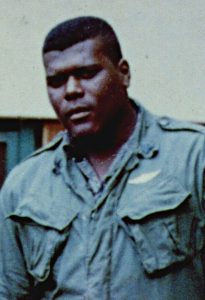 Combat diving…yes, that’s a real thing. Navy divers are used in ships maintenance, marine construction and salvage, demolition and mine clearance, and special forces. Army divers may be used in engineering activities such as bridge construction and demolition, and by special forces units. I guess that when I considered combat diving, I thought of underwater battles, and once in a while, that was the case. One case I heard of recently is that of Robert Hughes. Sergeant Hughes served as the Dive NCO for First Force Recon Company during 1967 to 1968. Born September 26, 1951, Hughes grew into a tall muscular man, and that helped him in the performance of his duties. During the Vietnam War, it seems that while divers had jobs to do routinely below the surface of the water, the Vietcong had a tendency to try to sabotage the divers, and that’s when they knew what real combat diving was.
Combat diving…yes, that’s a real thing. Navy divers are used in ships maintenance, marine construction and salvage, demolition and mine clearance, and special forces. Army divers may be used in engineering activities such as bridge construction and demolition, and by special forces units. I guess that when I considered combat diving, I thought of underwater battles, and once in a while, that was the case. One case I heard of recently is that of Robert Hughes. Sergeant Hughes served as the Dive NCO for First Force Recon Company during 1967 to 1968. Born September 26, 1951, Hughes grew into a tall muscular man, and that helped him in the performance of his duties. During the Vietnam War, it seems that while divers had jobs to do routinely below the surface of the water, the Vietcong had a tendency to try to sabotage the divers, and that’s when they knew what real combat diving was.
While hunting the Vietcong fighters, it was not uncommon for US troops to observe the Vietnamese flee underwater and never reemerge. It was proof that they had made their escape into one of the countless tunnel entrances located below the water. The US had scuba trained Force Recon Marines, who would comb the river bed looking for bodies, equipment caches, or  enemy tunnels. It was during one such mission that Hughes fought the battle that would earn him his reputation.
enemy tunnels. It was during one such mission that Hughes fought the battle that would earn him his reputation.
Hughes had always been called a “gentle giant” by the Marines he served with. Of course, it was his size that earned him the giant part…Hughes towered over many of his peers. He was a gentle man, but all that disappeared when he was engaged in a battle with the VC fighters. Then he became a virtual tiger. On one dive mission, Hughes was given the task of locating an underwater tunnel. He was searching through the murky darkness. As he felt his way along a bank with one hand, Kabar knife ready in the other. He located what appeared to be the tunnel entrance, and suddenly an enemy diver shot out of the hole. A fierce battle ensued. It was a fight for his life. Hughes knew that he had to kill or be killed. Submerged and hampered by limited visibility, Hughes fought to get control of 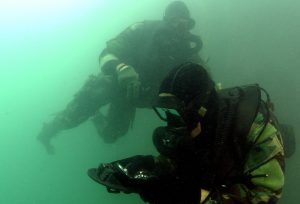 his enemy. Finally, he gained the upper hand. Hughes wrapped his legs around his enemy and pulled him in close. Then he spit out his regulator, lunged forward, and bit into the diver’s throat, ripping it out. The diver released his grip and Hughes finished the fight. This wasn’t the only “kill” to Hughes’ credit, but it was quite possible the most dramatic. Not many people have fought to the death by ripping out the throat of their enemy with their teeth. Hughes was a tiger in battle. One marine who served with him, said, “There was no one I would rather have as security underwater than Sergeant Hughes.” Hughes was an amazing soldier. Sergeant Robert “Gentle Giant” Hughes died on February 14, 1990.
his enemy. Finally, he gained the upper hand. Hughes wrapped his legs around his enemy and pulled him in close. Then he spit out his regulator, lunged forward, and bit into the diver’s throat, ripping it out. The diver released his grip and Hughes finished the fight. This wasn’t the only “kill” to Hughes’ credit, but it was quite possible the most dramatic. Not many people have fought to the death by ripping out the throat of their enemy with their teeth. Hughes was a tiger in battle. One marine who served with him, said, “There was no one I would rather have as security underwater than Sergeant Hughes.” Hughes was an amazing soldier. Sergeant Robert “Gentle Giant” Hughes died on February 14, 1990.

 The other day, I was sitting in my living room, working of a story, when it suddenly dawned on me that it was very quiet in my house. Silence, while not exact, is nice sometimes. It isn’t exact, because the clock was ticking, the birds chirping, an occasional car drove by, or a plane went overhead, and even a gust of wind could be heard; but for the most part, it was truly very quiet. I’m not one of those people who has to have noise around me. In fact, I would rather not have too much noise, most of the time. They quiet can be very reflective and peaceful, but we seldom get it. It seems like there is always some noise going on in the world, demanding our attention. Even the little kids have moments when the noise level is just too much. Even a sibling crying can feel like a lot. I have always been one to like the quiet, so I can think my own thoughts and analyze the things going on around me. I like quiet reflection.
The other day, I was sitting in my living room, working of a story, when it suddenly dawned on me that it was very quiet in my house. Silence, while not exact, is nice sometimes. It isn’t exact, because the clock was ticking, the birds chirping, an occasional car drove by, or a plane went overhead, and even a gust of wind could be heard; but for the most part, it was truly very quiet. I’m not one of those people who has to have noise around me. In fact, I would rather not have too much noise, most of the time. They quiet can be very reflective and peaceful, but we seldom get it. It seems like there is always some noise going on in the world, demanding our attention. Even the little kids have moments when the noise level is just too much. Even a sibling crying can feel like a lot. I have always been one to like the quiet, so I can think my own thoughts and analyze the things going on around me. I like quiet reflection.
The world’s noise is very demanding. Sometimes it almost screams at us. In stark contrast, the silence is relaxing. It doesn’t force itself on us. It simply lingers patiently in the atmosphere. Maybe that is why the song, “Silence is Golden,” was penned. It is a fleeting moment, like a sunset, and then it is gone, and the family has come home, the television is turned on, the chatter begins, and the silence is shattered. We must enjoy those moments when they show up, because we really never know how long they will last, or when the next one might occur. Silent moments are really a gift of God for those of us who don’t relish the chaotic noise of a normal day, but even we don’t always “notice” them.
Sometimes we are too caught up in our own thoughts to realize that the silence has descended upon us. I wonder how that is possible, but I guess that sometimes our own thoughts can be very noisy. Consider the last 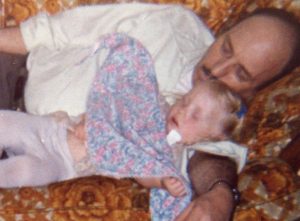
 time you had trouble falling asleep. What was going on? Well, if you’re like me, your head was filled with thoughts…the cares of the day, that you just couldn’t seem to shut off. What we wouldn’t give to be able to shut off the noise of our thoughts. We can go to an empty place, away from the outside noises, away from family, and turn off the television and radio; but those pesky thoughts in our head are very hard to turn off. Oh…that we could only have a switch for that. Then maybe we could finally get to sleep.
time you had trouble falling asleep. What was going on? Well, if you’re like me, your head was filled with thoughts…the cares of the day, that you just couldn’t seem to shut off. What we wouldn’t give to be able to shut off the noise of our thoughts. We can go to an empty place, away from the outside noises, away from family, and turn off the television and radio; but those pesky thoughts in our head are very hard to turn off. Oh…that we could only have a switch for that. Then maybe we could finally get to sleep.

 When we think of how the 50 states of the United States were formed, we somehow think of an orderly process that followed a specific protocol, but in many ways, that was not the case. There are actually a number of states that were planned, or even in place for a time, but failed to continue to be or failed to form into states that exist today. These states were often formed out of conflict, when people didn’t like what they saw around them, and they decided to take matters into their own hand. Had they continued to exist, it would have felt normal, but in light of today’s United States, they would have been really strange. Even the names of these proposed states were rather strange.
When we think of how the 50 states of the United States were formed, we somehow think of an orderly process that followed a specific protocol, but in many ways, that was not the case. There are actually a number of states that were planned, or even in place for a time, but failed to continue to be or failed to form into states that exist today. These states were often formed out of conflict, when people didn’t like what they saw around them, and they decided to take matters into their own hand. Had they continued to exist, it would have felt normal, but in light of today’s United States, they would have been really strange. Even the names of these proposed states were rather strange.
Things like Westsylvania, Transylvania, Muskogee, and Deseret; make me wonder how they came up with this stuff. Of course many of us have heard of Transylvania, but it had nothing to do wit Dracula or any other vampire. Sorry if that disappoints some people. Transylvania’s name, meaning “across the woods” in Latin, stems from the university’s founding in the heavily forested region of western Virginia known as the 
 Transylvania Colony, which became most of Kentucky in 1792. The state was founded in 1775, and statehood removed in 1776, when Virginia when the Virginia General Assembly invalidated the Transylvania Purchase.
Transylvania Colony, which became most of Kentucky in 1792. The state was founded in 1775, and statehood removed in 1776, when Virginia when the Virginia General Assembly invalidated the Transylvania Purchase.
The proposed state of Westsylvania was located in what is now West Virginia, southwestern Pennsylvania, and small parts of Kentucky, Maryland, and Virginia. Westsylvania was proposed early in the American Revolution It would have been the fourteenth state in the newly formed United States, had it been recognized. In the final years of the Revolutionary War…in 1782, Hugh Henry Brackenridge, a Pittsburgh lawyer and strong supporter of the national government, convinced the Pennsylvania Assembly to declare that agitation for a separate state was treason, rendering the promotion of Westsylvania subject to the death penalty. Pennsylvania also sent secret agents, such as the Reverend James Finley, to work against the Westsylvania movement. According to historian Jack Sosin, “Finely’s efforts, the threat that the settlers’ land might be sold, and the cool reaction to the proposed new state by Congress finally quieted the Westerners.”

 In all, there were about 12 proposed states that if ratified, would have changed the United States as we know it. I can’t imagine having 62 states, or living in a state called Absaroka, Delmarva, Scott, Nickajack, or Sequoyah. And while I was born in Superior, Wisconsin, I can’t imagine living in the state of Superior. And of course, Transylvania, Westsylvania, Lincoln, Muskogee, Deseret, or Franklin would be equally odd. While these “states” did exist for a time, I rather like our country just the way it is. Fifty states is a nice round number.
In all, there were about 12 proposed states that if ratified, would have changed the United States as we know it. I can’t imagine having 62 states, or living in a state called Absaroka, Delmarva, Scott, Nickajack, or Sequoyah. And while I was born in Superior, Wisconsin, I can’t imagine living in the state of Superior. And of course, Transylvania, Westsylvania, Lincoln, Muskogee, Deseret, or Franklin would be equally odd. While these “states” did exist for a time, I rather like our country just the way it is. Fifty states is a nice round number.
 The London Zoo housed a male golden eagle in the 1960s that they named Goldie. As we know, eagles love to fly high and be free. I don’t think they take well to being fenced in, at least Goldie certainly didn’t take well to it. On February 28, 1965, Goldie decided to take back his freedom. Goldie’s escape caused a nationwide sensation for the 12 days of his freedom. Then they caught him again. I feel sad for Goldie after he was caught, because being free was all he really wanted.
The London Zoo housed a male golden eagle in the 1960s that they named Goldie. As we know, eagles love to fly high and be free. I don’t think they take well to being fenced in, at least Goldie certainly didn’t take well to it. On February 28, 1965, Goldie decided to take back his freedom. Goldie’s escape caused a nationwide sensation for the 12 days of his freedom. Then they caught him again. I feel sad for Goldie after he was caught, because being free was all he really wanted.
Goldie first flew away from his keepers, while his cage was being cleaned. He saw his chance and he took it. Enjoying his newfound freedom, Goldie avoided being recaptured for nearly two weeks, despite a massive effort using equipment borrowed from the Royal Navy and Civil Defense Corps. He didn’t seem to have a desire to stray too far, and spent most of the time in Regent’s Park, which is the area surrounding the zoo. He also made a few  excursions into the nearby neighborhoods of Camden Town, Tottenham Court Road, and Euston. Those excursions brought him into the British public eye, and people were excited about this bit of celebrity. The zoo began receiving phone calls and letters in the thousands. Regent’s Park was the site of large crowds gathered to watch the bird’s keepers trying to catch Goldie. Drivers circled the park to watch Goldie in flight, causing severe traffic jams in the area. Of course, the media had a field day with the whole thing. There is nothing more interesting that watching the spectacle of a bunch of trainers trying to chase down an eagle…like they would have an easy success there. In fact the opposite was true, because Goldie spent two weeks roaming free before they finally caught him. Goldie was pretty resourceful too, because he managed to kill a duck in the garden of Winfield House, official residence of the United States Ambassador to the United Kingdom, within Regent’s Park. Goldie also attacked two terriers in the park, but was driven off by their owner. Of course, nobody likes to think about that part, but it is normal for a predatory bird. In fact, it was food that finally
excursions into the nearby neighborhoods of Camden Town, Tottenham Court Road, and Euston. Those excursions brought him into the British public eye, and people were excited about this bit of celebrity. The zoo began receiving phone calls and letters in the thousands. Regent’s Park was the site of large crowds gathered to watch the bird’s keepers trying to catch Goldie. Drivers circled the park to watch Goldie in flight, causing severe traffic jams in the area. Of course, the media had a field day with the whole thing. There is nothing more interesting that watching the spectacle of a bunch of trainers trying to chase down an eagle…like they would have an easy success there. In fact the opposite was true, because Goldie spent two weeks roaming free before they finally caught him. Goldie was pretty resourceful too, because he managed to kill a duck in the garden of Winfield House, official residence of the United States Ambassador to the United Kingdom, within Regent’s Park. Goldie also attacked two terriers in the park, but was driven off by their owner. Of course, nobody likes to think about that part, but it is normal for a predatory bird. In fact, it was food that finally  caught Goldie. He was finally caught on 11 March after the zoo’s deputy head keeper tempted him to earth with a dead rabbit. He was in good health after his experience and was reunited with his mate, Regina, which may have been the reason Goldie stayed in the area. The zoo’s attendance nearly doubled in the days after his return. That wasn’t the end of Goldie’s story however. Goldie escaped once again on December 15, 1965, and was recaptured December 19, 1965. I think that while Goldie loved his mate, Regina, he didn’t want to be fenced in. Golden eagles are monogamous, staying with their mate for years or even life. On March 8, 1985, Goldie was sent to the Falconry Centre in Newent, and died there about March 23, 1986.
caught Goldie. He was finally caught on 11 March after the zoo’s deputy head keeper tempted him to earth with a dead rabbit. He was in good health after his experience and was reunited with his mate, Regina, which may have been the reason Goldie stayed in the area. The zoo’s attendance nearly doubled in the days after his return. That wasn’t the end of Goldie’s story however. Goldie escaped once again on December 15, 1965, and was recaptured December 19, 1965. I think that while Goldie loved his mate, Regina, he didn’t want to be fenced in. Golden eagles are monogamous, staying with their mate for years or even life. On March 8, 1985, Goldie was sent to the Falconry Centre in Newent, and died there about March 23, 1986.
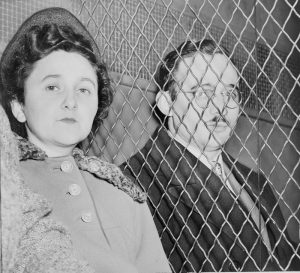
 I could never begin to understand how an American citizen could be so evil as to commit espionage against the United States by selling secrets to other countries, but then again, that is not something that is so unusual these days. In the 1940’s, however, it wasn’t so common. Nevertheless, Julius Rosenberg and Ethel Rosenberg were American citizens who were convicted of spying on behalf of the Soviet Union. The Rosenbergs were accused of providing top-secret information about radar, sonar, jet propulsion engines, and valuable nuclear weapon designs to the Soviet Union at a time when the United States was the only country in the world with nuclear weapons. Imagine if we could go back to that time. The Rosenbergs were convicted of espionage in 1951, and they were executed by the federal government of the United States in 1953 in the Sing Sing correctional facility in Ossining, New York. They were the first American civilians to be executed for such charges and the first to suffer that penalty during peacetime.
I could never begin to understand how an American citizen could be so evil as to commit espionage against the United States by selling secrets to other countries, but then again, that is not something that is so unusual these days. In the 1940’s, however, it wasn’t so common. Nevertheless, Julius Rosenberg and Ethel Rosenberg were American citizens who were convicted of spying on behalf of the Soviet Union. The Rosenbergs were accused of providing top-secret information about radar, sonar, jet propulsion engines, and valuable nuclear weapon designs to the Soviet Union at a time when the United States was the only country in the world with nuclear weapons. Imagine if we could go back to that time. The Rosenbergs were convicted of espionage in 1951, and they were executed by the federal government of the United States in 1953 in the Sing Sing correctional facility in Ossining, New York. They were the first American civilians to be executed for such charges and the first to suffer that penalty during peacetime.
On March 6, 1951, the trial of Ethel and Julius Rosenberg began in New York Southern District federal court. Presiding over the espionage trial was Judge Irving R Kaufman. The couple was charged with espionage, rather than treason, because the latter could not be charged since the United States was not at war with the Soviet Union at the time of the crime’s commission. The father and son team of Emanuel and Alexander Bloch defended the Rosenbergs and their co-defendant, Morton Sobell. Roy Cohn, best known for his association with Senator Joseph McCarthy prosecuted the trio.
The Rosenbergs and Sobell, along with other co-conspirators were directly responsible for the beginning of the Cold War. Julius Rosenberg’s brother-in-law, David Greenglass was a machinist at Los Alamos, where America developed the atomic bomb. Rosenberg was a member of the American Communist Party and was fired from his government job during the Red Scare. According to Greenglass, Rosenberg asked him to pass highly confidential instructions on making atomic weapons to the Soviet Union. In compliance, Greenglass gave the information to Harry Gold, who gave it to the Russians. The Soviets exploded their first atomic bomb in September 1949, effectively starting the Cold War, based on information, including that from Greenglass, they had obtained from spies.
The confession of Greenglass was the only direct evidence of the Rosenberg’s involvement. The left-wing  community believed that the Rosenbergs were prosecuted because of their membership in the Communist Party. The Rosenbergs became the cause of leftists throughout the nation. The rest of their family, including their two sons declared the innocence of the Rosenbergs for years. The trial lasted nearly a month…ending on April 4, 1951. Sobell received a thirty year sentence. Greenglass got fifteen years for his cooperation. Reportedly, the Rosenbergs were offered a deal in which their death sentences would be commuted in return for an admission of their guilt. They refused and were executed. In 2008, the only surviving defendant, Morton Sobell, admitted that he was a Soviet spy and implicated Julius Rosenberg in industrial and military espionage.
community believed that the Rosenbergs were prosecuted because of their membership in the Communist Party. The Rosenbergs became the cause of leftists throughout the nation. The rest of their family, including their two sons declared the innocence of the Rosenbergs for years. The trial lasted nearly a month…ending on April 4, 1951. Sobell received a thirty year sentence. Greenglass got fifteen years for his cooperation. Reportedly, the Rosenbergs were offered a deal in which their death sentences would be commuted in return for an admission of their guilt. They refused and were executed. In 2008, the only surviving defendant, Morton Sobell, admitted that he was a Soviet spy and implicated Julius Rosenberg in industrial and military espionage.

 The people of my generation will remember the Hula Hoop. They are still around, of course, so the people of the current time might know about them too, but actually may never have tried one. As a kid, I suppose I was able to do the Hula Hoop to a degree, but I was never at the expert level by any means, even though I tried. When I say expert level, I an not talking about being able to keep the Hula Hoop going, because I could do that, but there were people who could keep it going on their arm or leg, and even their neck. I was always amazed at their agility and their skills…especially since I couldn’t master those tricks.
The people of my generation will remember the Hula Hoop. They are still around, of course, so the people of the current time might know about them too, but actually may never have tried one. As a kid, I suppose I was able to do the Hula Hoop to a degree, but I was never at the expert level by any means, even though I tried. When I say expert level, I an not talking about being able to keep the Hula Hoop going, because I could do that, but there were people who could keep it going on their arm or leg, and even their neck. I was always amazed at their agility and their skills…especially since I couldn’t master those tricks.
The Hula Hoop was invented in 1958, and quickly became a huge fad when it was marketed by Wham-O. It was patented on March 5, 1963 by the company’s co-founder, Arthur “Spud” Melin. The company sold an estimated 25 million of the hip-swiveling toys in its first four months of production alone. Melina and Knerr were inspired to develop the Hula Hoop after they saw a wooden hoop that Australian children twirled around their waists during gym class. Wham-O began producing a plastic version of the hoop, dubbed “Hula” after the hip-gyrating Hawaiian dance of the same name, and demonstrating it on Southern California playgrounds. Hula Hoop mania took off from there.
The Hula Hoop has even set some records in it’s day. “According to Ripley’s Believe It or Not, in April 2004, a performer at the Big Apple Circus in Boston simultaneously spun 100 hoops around her body. Earlier that same year, in January, according to the Guinness World Records, two people in Tokyo, Japan, managed to spin the world’s largest hoop–at 13 feet, 4 inches–around their waists at least three times each.” The enormous 
 popularity of the Hula Hoop was short-lived and within a matter of months, the masses were on to the next big thing. However, the Hula Hoop never faded away completely and still has its fans today. In fact, the “Smart Hula Hoop” is taking on a whole new look and a new use…exercise. Not that it wasn’t exercise before, but no one really thought of it that way, maybe because you couldn’t really keep it around your waist long enough to get a really good workout. So, someone came up with a version that doesn’t exactly look like the original Hula Hoop, but it works essentially the same as it’s older version.
popularity of the Hula Hoop was short-lived and within a matter of months, the masses were on to the next big thing. However, the Hula Hoop never faded away completely and still has its fans today. In fact, the “Smart Hula Hoop” is taking on a whole new look and a new use…exercise. Not that it wasn’t exercise before, but no one really thought of it that way, maybe because you couldn’t really keep it around your waist long enough to get a really good workout. So, someone came up with a version that doesn’t exactly look like the original Hula Hoop, but it works essentially the same as it’s older version.

 My sister-in-law, Rachel Schulenberg was a sweet, thoughtful girl who loved everyone she met. When Rachel left us to go to heaven on January 19th, 2021, we knew that nothing was ever going to be the same again. Rachel left a huge hole in our lives. Rachel wasn’t perfect…none of us are, but she never quit trying to make the lives of those around her happy. As I thought about her birthday this year, I decided to talk to her classmate, Jennifer Durante, who agreed to tell me about the Rachel she knew in school.
My sister-in-law, Rachel Schulenberg was a sweet, thoughtful girl who loved everyone she met. When Rachel left us to go to heaven on January 19th, 2021, we knew that nothing was ever going to be the same again. Rachel left a huge hole in our lives. Rachel wasn’t perfect…none of us are, but she never quit trying to make the lives of those around her happy. As I thought about her birthday this year, I decided to talk to her classmate, Jennifer Durante, who agreed to tell me about the Rachel she knew in school.
Jennifer first met Rachel in gym class, and they became good friends from that time forward. She was impressed the fact that Rachel was always “put together” at school. While most teenagers are lucky to get out of bed and get to school in sweatpants and a t-shirt, Rachel made sure that her hair and makeup were always perfect. She always dressed in skirts and heels, and always looked like a model. She was a classy lady, and anyone who knew her would agree to that statement. Rachel took pride in who she was, and that always showed. One day in gym class, a classmate made a rude remark about Rachel having stretchmarks on her legs, and Rachel, who didn’t like or allow bullying, immediately put that girl in her place. She told her that her stretchmarks came from her pregnancy, and that she was proud to be a mom. I can hear the silence now. That snotty little girl who thought she knew something, and knew nothing was immediately shot down. Rachel stood up or the little guy, and she 
 was not about to be made a victim herself. That rude classmate knew nothing about Rachel’s life, and she had no right to bully her.
was not about to be made a victim herself. That rude classmate knew nothing about Rachel’s life, and she had no right to bully her.
Rachel worked hard and got good grades in school. She was also very proud of being a mom, who wouldn’t let the circumstances of life hold her back from being the best she could be. She was determined to make a good life for her and her daughter, Cassie. In her Junior and Senior years of high school, she went to school during the day and worked at Wendy’s in the evenings and weekends to support herself and Cassie. Like most teenagers, Rachel didn’t always see eye to eye with her father, Cliff Franklin and her step-mom, Jan, but she never doubted their love for her, and she was always thankful for their support of her in being both a teenager and a mom.
Like most teenagers, Rachel liked to live life fast and play her music loud!! She loved to dance and because of her bubbly personality, she brought a ray of sunshine everywhere she went. Rachel was a great comedian and knew how to make people laugh, or even how defuse a bad situation. Those are such great qualities to have. 
 Rachel was a mom first, and she didn’t really get to go out much, but on the rare occasion, when she was able to go out and be a wild teenager, Jennifer tells me that she was the life of any party. It was as if she walked into a room, threw her arms up in the air and proclaimed “I have arrived, let’s get this party started!!” Rachel lives in Heaven now, but I can just hear her as she walked into Heaven saying that very thing. Today would have been Rachel’s 46th birthday. Happy first birthday in Heaven Rachel, we sure love and miss you here.
Rachel was a mom first, and she didn’t really get to go out much, but on the rare occasion, when she was able to go out and be a wild teenager, Jennifer tells me that she was the life of any party. It was as if she walked into a room, threw her arms up in the air and proclaimed “I have arrived, let’s get this party started!!” Rachel lives in Heaven now, but I can just hear her as she walked into Heaven saying that very thing. Today would have been Rachel’s 46th birthday. Happy first birthday in Heaven Rachel, we sure love and miss you here.

 My grand niece, Kaytlyn Griffith has reached a milestone in her life today. She is officially a teenager, turning 13 today. I find it very hard to believe that she could possibly be 13 already. It seems like just yesterday that Kaytlyn made her entrance into the world. Now, unbelievably, she is in her second year of Middle School already. School, now there’s a concept. We all thought we knew what school was like, but Covid-19 has completely blown our idea of school out of the water. Middle School is usually a time of learning more than just the educational studies. The students get to start having school dances, sports (which they also have in elementary school too), school politics, clubs, and other such activities. Unfortunately, with Covid, they haven’t had any dances and have to go straight to class when getting to school, instead of socializing for a while. It’s a whole new world, and the school kids are some of the worst hit by it.
My grand niece, Kaytlyn Griffith has reached a milestone in her life today. She is officially a teenager, turning 13 today. I find it very hard to believe that she could possibly be 13 already. It seems like just yesterday that Kaytlyn made her entrance into the world. Now, unbelievably, she is in her second year of Middle School already. School, now there’s a concept. We all thought we knew what school was like, but Covid-19 has completely blown our idea of school out of the water. Middle School is usually a time of learning more than just the educational studies. The students get to start having school dances, sports (which they also have in elementary school too), school politics, clubs, and other such activities. Unfortunately, with Covid, they haven’t had any dances and have to go straight to class when getting to school, instead of socializing for a while. It’s a whole new world, and the school kids are some of the worst hit by it.
The 2020 school year was the strangest one we have had since the 1918 Spanish Flue Pandemic. Things were normal, until Spring Break, and then it all stopped. School was over for the rest of the year. The Covid restrictions kept everyone at home, unless their jobs were deemed essential. Students had to adjust to online learning over Zoom or Google Classroom. Even screen time with their teachers was limited…often to 30 minutes a day. Parents became homeschool teachers, when they were not prepared for such an occupation. Kids became depressed and disinterested. The school year was a disaster, by anyone’s standards. Kaytlyn loves school, and this new educational reality was not a reality she wanted to be a part of. In fact, I don’t know of a single student that did want to be a part of it, or the current situation that is just a continuation of the new educational reality…school with a mask.
One good thing that came out of being home for the last part of the 2020 school year was that Kaytlyn’s family got a new animal friend…Olive. Olive is a mixed breed of Pit Bull, German Shepard, and Lab, and she is Kaytlyn’s best friend…well, animal friend, anyway. It was nice having Kaytlyn home with Olive, when she first came to live with them, to help with training her to go outside and not to chew stuff up. Kaytlyn and Olive’s birthdays are also very close. My Olive was born on March 4th, so Olive is 1 and Kaytlyn is 13. Susan finds herself feeling rather sad, because her children are officially no longer little kids. I know what she means. You are never ready for adult kids…or grandkids, but they don’t care. Kids just keep growing up.


Kaytlyn is really enjoying being back in school this year and working very hard on her grades. I’m not sure if we will ever really know how badly this online learning experiment hurt our kids…especially since “No Child Left Behind” doesn’t allow kids to be held back. They just get further and further behind. Thankfully, Kaytlyn is the exception to that rule too. This year with her hard work, Kaytlyn is carrying a 3.5 GPA, putting her on the Honor Roll!! Her parents are so proud of her, and so am I. Today is Kaytlyn’s 13th birthday. Happy birthday Kaytlyn!! Have a great day!! We love you!!

 Anyone who has been around very long knows what a fire hydrant is. Before the fire hydrant, water ad to be transported to a fire. If there was a water source nearby, they would often use a bucket brigade, but if not they had to try to bring it in by wagon. Bucket brigades weren’t very efficient, but they were all they had at the time. Firefighters stood in a line between the fire and the source of water and passed buckets along, one by one until the fire was extinguished. All too often, even in the cities, the structure burned to the ground because the source of water was simply too far away to save it. Finally, when city water became a thing, someone came up with the idea of a fire hydrant. This invention has worked so well, that it has saved untold numbers of lives and structures. These days there is a fire hydrant on just about every block. In fact, they are so common that we really don’t notice them at all.
Anyone who has been around very long knows what a fire hydrant is. Before the fire hydrant, water ad to be transported to a fire. If there was a water source nearby, they would often use a bucket brigade, but if not they had to try to bring it in by wagon. Bucket brigades weren’t very efficient, but they were all they had at the time. Firefighters stood in a line between the fire and the source of water and passed buckets along, one by one until the fire was extinguished. All too often, even in the cities, the structure burned to the ground because the source of water was simply too far away to save it. Finally, when city water became a thing, someone came up with the idea of a fire hydrant. This invention has worked so well, that it has saved untold numbers of lives and structures. These days there is a fire hydrant on just about every block. In fact, they are so common that we really don’t notice them at all.
Credit for the invention of the fire hydrant often goes to Frederick Graff Sr, who invented the first pillar fire hydrant in 1801, however fire hydrants were in place before that. The main reason that the credit has gone to Graff is that the name of the real inventor has been lost. We know that it was invented in Philadelphia, Pennsylvania in the early 1800s. That said, it must have been right before Graff’s version, which is said to have been invented in 1801. The patent with the name of the true inventor was destroyed, but just how that happened is unknown. There are stories of fire, floods, and even an argument that caused the destruction of them. Whatever happened, we will never really know the truth on this. However, we do know for a fact that Graff created the first pillar fire hydrant in 1801, which is the reason why he receives credit for it today.


We owe a debt of gratitude to the inventor of the fire hydrant, whoever he may be, but we have no idea who to credit for it. I find it very strange that even the story of how the patent was lost is a mystery. It almost seems like it has been hidden for a specific purpose. It makes me wonder if the two men fought over who was the real inventor. Maybe they even worked on it together. Since both are now gone, we can’t even ask. The whole matter feels unreal, but we are left with the mystery anyway. Over the years styles and designs of hydrants have varied by country, state, and city, but the basic design is still the same. It pulls water from the underground source and connects it to the firefighters hose so water can be sprayed on the fire to put out the fire.

